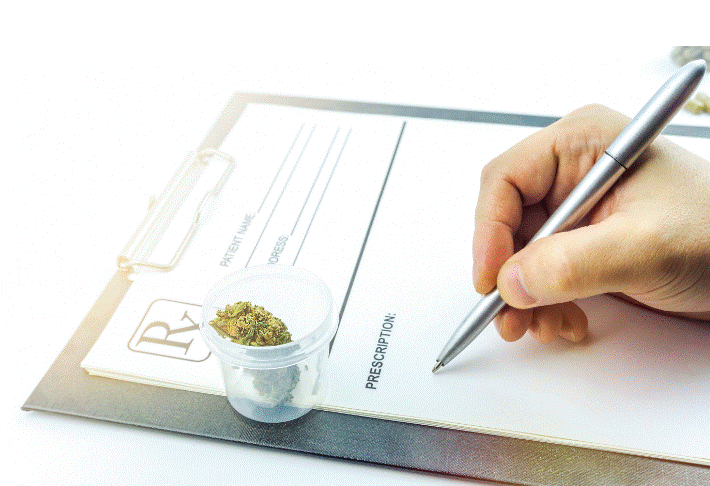Medical Marijuana
Although marijuana is still viewed as a controlled substance having no accepted use by the Federal government, medical marijuana is gaining wider acceptance under state law as a tool to help alleviate severe pain, nausea, and other conditions.
WHAT IS MEDICAL MARIJUANA?
Marijuana is a cannabis plant related to the plant that produces hemp. Both marijuana and hemp contain chemical compounds called cannabinoids.
In marijuana, the two most common cannabinoids are tetrahydrocannabinol (THC) and cannabidiol (CBD).
These compounds react with the body and lead to different effects. THC is the blend responsible for the intoxicating effects of marijuana; that is, it’s the reason people get high.
This happens because it interacts with particular receptors in the body, fitting them like a key in a lock.
Because CBD’s molecules are shaped differently, CBD does not have the same effect; it does not lead to a high feeling. Different strains of marijuana contain different levels of THC and CBD.
Cultivars (varieties) high in THC include ChemDog, Godfather OG, and Super Glue. Cultivars high in CDB include Ringo’s Gift, Cannatonic, and Cali Cure.
Marijuana can be consumed in several ways. Oils can be pressed out from the plant and applied directly to the skin, put under the tongue, or added to lotions, creams, or food.
The dried flowers can be smoked or added to food (often cookies, brownies, or candy), known as “edibles.”
Under federal law, marijuana is a controlled material; that is, it is illegal to possess, grow, or use.
In 2013, nonetheless, the Department of Justice issued a memo identifying state-level legal marijuana cases as a low priority for prosecution.
Since that time, many states have made marijuana legal for recreational and, particularly, medical use.
DOCTORS MUST RECOMMEND
Medical marijuana cannot be obtained without a doctor’s approval. Not every physician is willing to do so without state clarification, though, for reasons that include not only doubts about the effectiveness of the drug but also concerns about violating federal law.
To prescribe medications, doctors must be licensed by the U.S. Drug Enforcement Agency—and breaking federal law can mean losing their licensure.
In 2013, many doctors changed their minds about medical marijuana after learning about a little girl named Charlotte.
Charlotte, only 5 years old, was suffering 300 seizures a week, and the medications she had been given by doctors had left her “doped out.”
She couldn’t walk, talk, or eat. Her parents asked a hundred doctors to prescribe medical marijuana and finally found doctors who agreed to prescribe Charlotte CDB oil.
The effect was profound: Charlotte went from 300 seizures a week to just one.
For decades, marijuana growers have been breeding plants to have higher and higher levels of THC because users were interested in getting high, not getting cured, so high-CBD plants were hard to find.
Charlotte’s family found growers in Colorado who had a high-CBD cultivar in low demand, and the growers agreed to work with their plants and produce a new strain that has extremely high CBD levels.
The strain, Charlotte’s Web, has helped hundreds of children since it was developed.
Charlotte’s experience prompted state legislators to consider medical marijuana as a potential option for people who otherwise could not be helped.
As of January 2020, medical marijuana is legal in 33 states. However, because of the conflict between state and federal law, doctors cannot actually prescribe marijuana; they can only recommend it.
The U.S. Food and Drug Administration in 2018 approved a CBD-containing oral solution for patients two years and up who have epilepsy, Lennox-Gastaut syndrome, or Dravet syndrome, all conditions that involve seizures.
Marijuana, medical or otherwise, is prohibited in Idaho, Nebraska, and South Dakota and essentially illegal in Kentucky and Kansas, requiring that products contain zero THC, a practical impossibility.
The remaining states and Washington, D.C., permit the use of medical marijuana, but the conditions it is approved to treat vary from state to state.
For example, sickle cell disease is among the approved conditions in Georgia, West Virginia, and Pennsylvania. Utah permits the use of medical marijuana for ulcerative colitis.
Ohio allows its use to treat fibromyalgia. Oklahoma’s program requires an application rather than evidence of a particular medical condition.
In general, medical marijuana is approved for people who have cancer, glaucoma, and HIV/AIDS. However, check the laws and restrictions before you being the process of obtaining medical marijuana.
OBTAINING MEDICAL MARIJUANA
Patients who want to obtain medical marijuana must go through several steps. First, they must recommend a doctor who thinks that marijuana will be helpful for their condition.
A recommendation is not the same as a prescription; it cannot be filled at a pharmacy. After getting the recommendation, you may need to get a medical marijuana identification card, depending on your state’s requirements. Then you can go to a dispensary and obtain your medical marijuana.
In states where marijuana is fully legal, such as California, Maine, and Massachusetts, residents can grow their own marijuana plants. However, they must follow strict rules regarding the number of plants they can grow and how much they may carry with them, and they may not drive under the influence.
Who Uses Medical Marijuana?
The following figures explain medical marijuana users in Colorado, as of December 2019: Patients with active medical marijuana registrations: 81,610. Of that number, 61.7% are male, and 38.3% are female.
The average age is 44, and most patients (75,952) reported severe pain as they use medical marijuana.
Other conditions include cancer, post-traumatic stress disorder, severe nausea, and muscle spasms.
For many people, medical marijuana and products of high-CBD marijuana cultivars provide a better quality of life or relief from constant pain and the emotional distress it causes.
Resources
Websites
“DrugFacts: Marijuana as Medicine.” National Institute on Drug Abuse (NIDA). July 2019. https://www.drugabuse.gov/publications/drugfacts/marijuana-medicine (accessed February 19, 2020).
“Marijuana.” MedlinePlus. February 5, 2020. https://medlineplus.gov/marijuana.html (accessed February 19, 2020).
“Marijuana Laws by State in 2020: A Legal Weed Map and Short Guide to Regulation.” O.Berk. August 1, 2019. https://www.oberk.com/marijuanalawsbystatein2020 (accessed February 19, 2020).
“Medical Cannabis.” DrugBank. February 2, 2020. https://www.drugbank.ca/drugs/DB14009 (accessed February 19, 2020).
Organizations
American Medical Marijuana Physicians Association, PO Box 266, Oakland, FL, 34760, (321) 917-3212, https://ammpa.net.
Medicinal Marijuana Association, 120 Adelaide Street West, Suite 2500, Toronto, ONT, M5H 1T1, (855) 420-8222, https://www.medicinalmarijuanaassociation.com.








